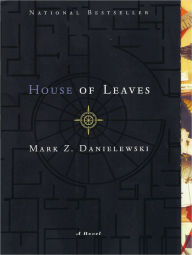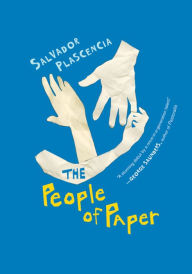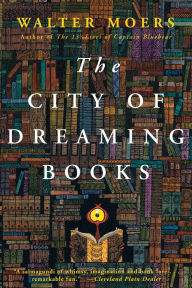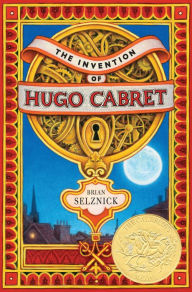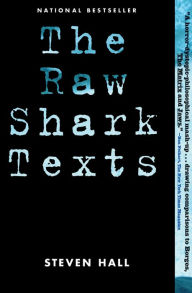6 Novels Showcasing Absolutely Insane Book Design
Words are incredibly powerful—any concept can be conveyed, argument turned aside, or feeling hurt with the use of just a few carefully-chosen words. Wars have been started and ended with words. The very foundations of society are, in fact, a bunch of words written down and agreed upon.
But visuals—the way the words appear on the page—are powerful too, and some writers employ them to incredible effect. These six books represent some of the most incredible design and typesetting to be found in novels.
House of Leaves: The Remastered Full-Color Edition
House of Leaves: The Remastered Full-Color Edition
In Stock Online
Paperback
$13.53
$22.00
Just About Everything by Mark Z. Danielzewski
Danielzewski is well known for the way he combines words and typesetting tricks. House of Leaves, Only Revolutions, and most recently, the first three volumes of his 27-volume project The Familiar all utilize unusual and sometimes confounding typesetting and design tricks to deepen the story and unsettle the reader, from footnotes that twist and turn back and forth through the book, to paragraphs typeset to resemble shapes or objects (or, in one memorable image from The Familiar, rain falling on the page). Danielzewski may be the master of this technique—his novels as close to multimedia objects as you can get without a power source.
Just About Everything by Mark Z. Danielzewski
Danielzewski is well known for the way he combines words and typesetting tricks. House of Leaves, Only Revolutions, and most recently, the first three volumes of his 27-volume project The Familiar all utilize unusual and sometimes confounding typesetting and design tricks to deepen the story and unsettle the reader, from footnotes that twist and turn back and forth through the book, to paragraphs typeset to resemble shapes or objects (or, in one memorable image from The Familiar, rain falling on the page). Danielzewski may be the master of this technique—his novels as close to multimedia objects as you can get without a power source.
The People of Paper
The People of Paper
In Stock Online
Paperback $15.95
The People of Paper, by Salvador Plascencia
In some editions of this strange, wonderful book, a word is literally cut from the page when it appears. In all editions, words and sentences are blacked out, the stories of the characters are laid out in columns side-by-side to be read, somehow, concurrently, and one character’s thoughts are presented as impenetrable gray ink. There is a story, and it can only be described using the scientific term “bonkers” (let’s just say when Plascencia himself shows up as a character, you will not be surprised in the least), but this is also a book that could be observed instead of read, as each page is a delight of interesting and unexpected layouts and design choices.
The People of Paper, by Salvador Plascencia
In some editions of this strange, wonderful book, a word is literally cut from the page when it appears. In all editions, words and sentences are blacked out, the stories of the characters are laid out in columns side-by-side to be read, somehow, concurrently, and one character’s thoughts are presented as impenetrable gray ink. There is a story, and it can only be described using the scientific term “bonkers” (let’s just say when Plascencia himself shows up as a character, you will not be surprised in the least), but this is also a book that could be observed instead of read, as each page is a delight of interesting and unexpected layouts and design choices.
The City of Dreaming Books (Zamonia Series #3)
The City of Dreaming Books (Zamonia Series #3)
By Walter Moers
In Stock Online
Paperback $17.95
The City of Dreaming Books, by Walter Moers
Moers writes about a fantasy universe where books are more important than anything. Puns and literary references abound, and the wonderful black and white illustrations bring everything to visual life in a very traditional way. There are some grand touches, however, that bring the story to life in other ways—as when the protagonist, Optimus Yarnspinner, is given a poisoned book. As he opens it, the pages the reader sees become the pages of the poisoned book. As the poison take effect, the text fades—culminating in several blank pages to indicate that Yarnspinner is unconscious. It’s a deft way to convey a plot point without any words at all.
The City of Dreaming Books, by Walter Moers
Moers writes about a fantasy universe where books are more important than anything. Puns and literary references abound, and the wonderful black and white illustrations bring everything to visual life in a very traditional way. There are some grand touches, however, that bring the story to life in other ways—as when the protagonist, Optimus Yarnspinner, is given a poisoned book. As he opens it, the pages the reader sees become the pages of the poisoned book. As the poison take effect, the text fades—culminating in several blank pages to indicate that Yarnspinner is unconscious. It’s a deft way to convey a plot point without any words at all.
The Invention of Hugo Cabret
The Invention of Hugo Cabret
By
Brian Selznick
Illustrator
Brian Selznick
In Stock Online
Hardcover $24.99
The Invention of Hugo Cabret, by Brian Selznick
The first forty or so pages of this novel have no words whatsoever; presented as an homage to the early films that inspire the story, the beginnings of that story are presented as hand-drawn stills of a silent movie. Once the words kick in, Selznick does something exciting: the words convey thoughts and interior monologues of the characters, the pictures convey action. This rule is adhered to throughout the rest of the story, and it makes the novel one of the most unique reading experiences ever. At no point do the illustrations and text appear on the same page, which forces the reader to switch mentally from one to other when the shifts come. Where many books are praised for “fast-paced” action, nothing can beat a few well-composed pictures for conveying a pursuit or other exciting moment; most importantly, of course, the story is fascinating, and the illustrations are beautiful.
The Invention of Hugo Cabret, by Brian Selznick
The first forty or so pages of this novel have no words whatsoever; presented as an homage to the early films that inspire the story, the beginnings of that story are presented as hand-drawn stills of a silent movie. Once the words kick in, Selznick does something exciting: the words convey thoughts and interior monologues of the characters, the pictures convey action. This rule is adhered to throughout the rest of the story, and it makes the novel one of the most unique reading experiences ever. At no point do the illustrations and text appear on the same page, which forces the reader to switch mentally from one to other when the shifts come. Where many books are praised for “fast-paced” action, nothing can beat a few well-composed pictures for conveying a pursuit or other exciting moment; most importantly, of course, the story is fascinating, and the illustrations are beautiful.
Extremely Loud and Incredibly Close
Extremely Loud and Incredibly Close
In Stock Online
Paperback $15.99
Extremely Loud and Incredibly Close, by Jonathan Safran Foer
Foer made a splash with this novel, which deals with a young boy’s attempts to make sense of his father’s death on 9/11. Sometimes overlooked in reviews or retrospectives is the careful use of typesetting the book employs, with different characters having different fonts—but, more importantly, the fonts and layouts used also reflect the actions of the characters. Oskar, the narrator, has very traditional typesetting until we start seeing the images he collects on his travels. His grandmother, writing on an old-school electric typewriter, has text spaced wider to reflect her choice of technology. The grandfather’s sections are supposedly written in haste in a small notebook, and the typesetting—often showing just one line on a page—reflects this as well. In other words, Foer uses the design to subtly underscore the situation of each character, culminating in the infamous flip-book illustration that reverses a man leaping from the Twin Towers on that terrible day, a powerful visual representation of the novel’s themes.
Extremely Loud and Incredibly Close, by Jonathan Safran Foer
Foer made a splash with this novel, which deals with a young boy’s attempts to make sense of his father’s death on 9/11. Sometimes overlooked in reviews or retrospectives is the careful use of typesetting the book employs, with different characters having different fonts—but, more importantly, the fonts and layouts used also reflect the actions of the characters. Oskar, the narrator, has very traditional typesetting until we start seeing the images he collects on his travels. His grandmother, writing on an old-school electric typewriter, has text spaced wider to reflect her choice of technology. The grandfather’s sections are supposedly written in haste in a small notebook, and the typesetting—often showing just one line on a page—reflects this as well. In other words, Foer uses the design to subtly underscore the situation of each character, culminating in the infamous flip-book illustration that reverses a man leaping from the Twin Towers on that terrible day, a powerful visual representation of the novel’s themes.
The Raw Shark Texts: A Novel
The Raw Shark Texts: A Novel
By Steven Hall
In Stock Online
eBook
$10.49
$16.00
The Raw Shark Texts, by Steven Hall
Hall’s novel has one of the most original and difficult premises ever conceived. A man named Eric Sanderson awakes from some sort of attack. He is informed that he has a rare fugue condition resulting in deteriorating memory, but clues that seem to come from his past self inform him that he has, instead, run afoul of a “conceptual shark” called a Ludovician, which feeds on human thoughts and your very sense of self, materializing from the fictional to become quite real. When Sanderson encounters the shark, Hall conveys the encounter by having the shark materialize into visuals formed by words and letters, literally becoming manifest from fiction. Every time the shark arrives on the scene, the trick is repeated with increasing bravado, making these encounters visually interesting, exciting, and mysterious.
The Raw Shark Texts, by Steven Hall
Hall’s novel has one of the most original and difficult premises ever conceived. A man named Eric Sanderson awakes from some sort of attack. He is informed that he has a rare fugue condition resulting in deteriorating memory, but clues that seem to come from his past self inform him that he has, instead, run afoul of a “conceptual shark” called a Ludovician, which feeds on human thoughts and your very sense of self, materializing from the fictional to become quite real. When Sanderson encounters the shark, Hall conveys the encounter by having the shark materialize into visuals formed by words and letters, literally becoming manifest from fiction. Every time the shark arrives on the scene, the trick is repeated with increasing bravado, making these encounters visually interesting, exciting, and mysterious.
